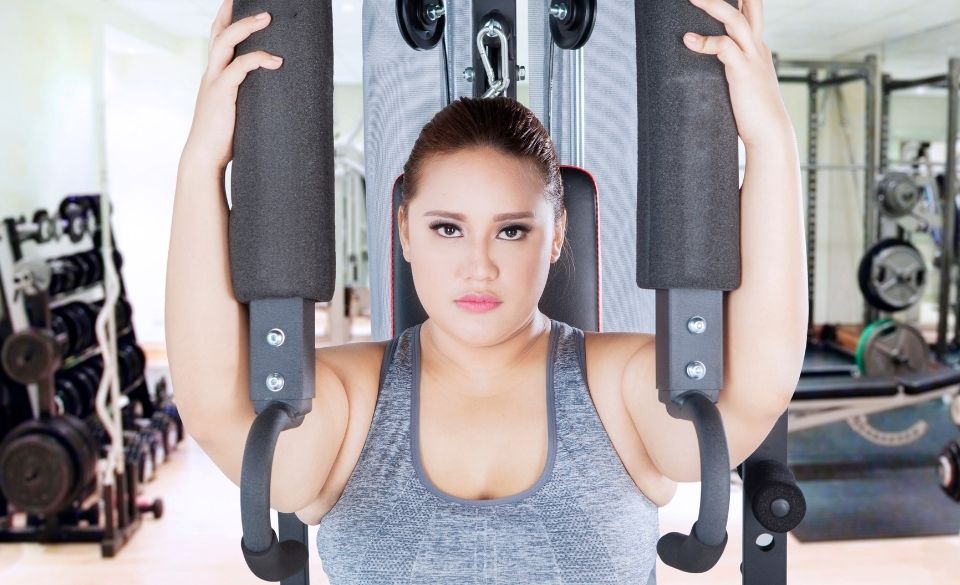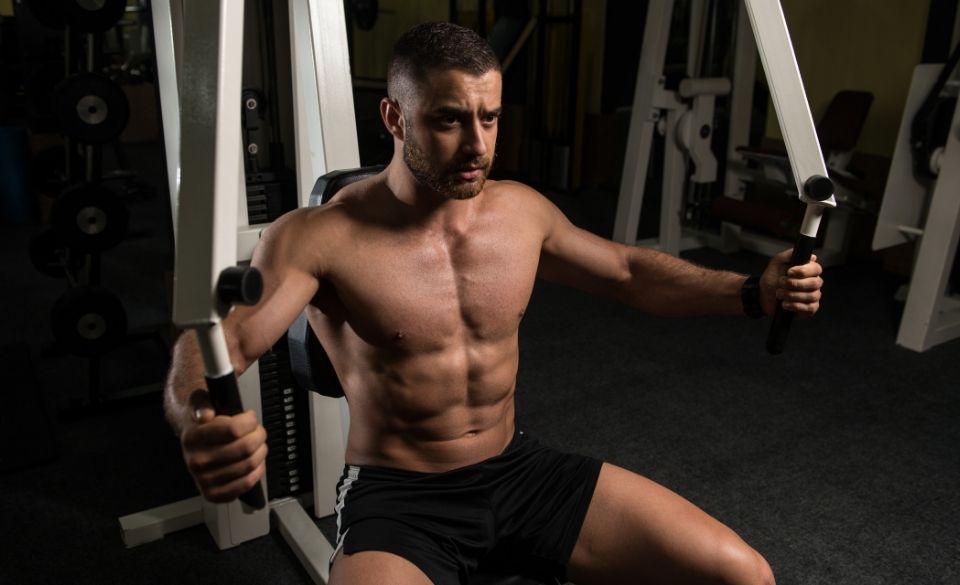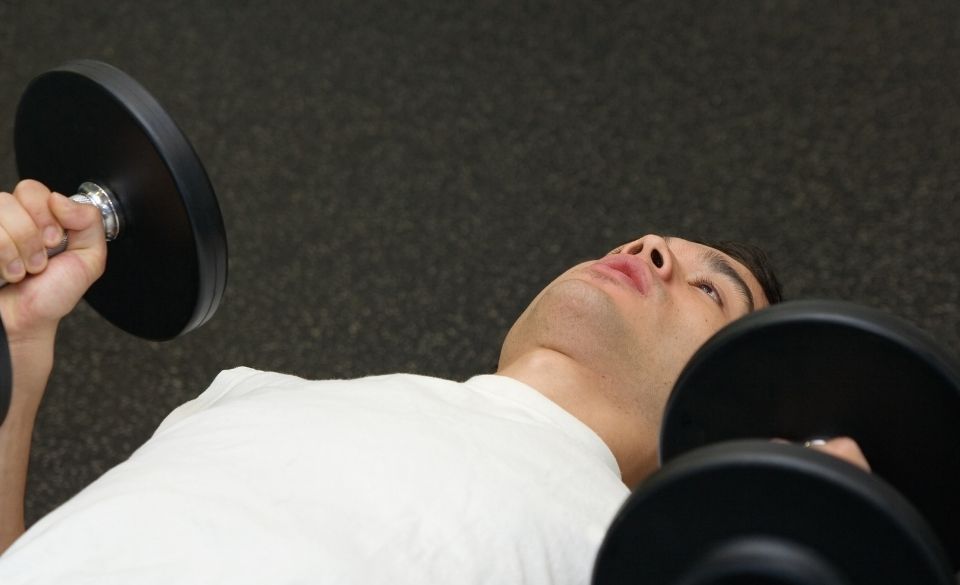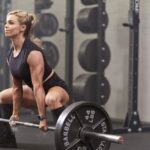
Bad Chest Genetics – Updated 2022 – A Complete Guide
Page Contents
Producing results in the gym can be challenging enough. However, when you throw in bad chest genetics it’s as if the deck is stacked against you. Genetics play a huge role in everyone’s life. If it wasn’t for different genetics everyone would be the same. Your unique genetical makeup is what makes you different and unique from other individuals. When you consider this, it should not be a surprise that they play such a big role in weightlifting and bodybuilding.
You ever seen a stick-thin guy in the gym hammering his hamstrings for years while producing little results? Unfortunately, the deck was stacked against him from the beginning. This could be the very reason you are not producing the chest results you desire in your chest. How do you know if you have bad chest muscle genetics? How to fix bad chest genetics? Those are excellent inquires and what you’ll discover below.

Good VS Bad Chest Genetics
Have you been hitting the gym for years, pounding your chest with rep after rep but noticing little results? If this is the case, you’ve probably already investigated good vs bad chest genetics. That doesn’t necessarily mean what you found was accurate. There is a lot of mixed information out there when it comes to bad upper chest genetics. Unfortunately, not everyone can be born with the perfect genetical makeup. That being said, there are some genetics more desirable than others.
To understand these genetic makeups, you need to assess the three primary body types. Every person on the plant will fall into either one of these three categories. Some might be right on the edge of two, but you should fall into one of the others. These body types are ectomorphs, mesomorphs, and endomorphs.
Ectomorph – An ectomorphs would generally be classified as an average skinny individual. He should be lean, mean, and gangly. Brue Lee would be the perfect example of this body type. Some of the common stereotypical traits are naturally skinny, light bone structure, lean muscles, lower body fat, narrow shoulder, and flat chest. These body types would be considered bad chest genetics.
Mesomorph – Mesomorphs are much easier to spot than other body types. This is because they are naturally jacked. Think of someone naturally tall and athletic with the perfect torso and V taper abdominal. Some perfect examples of mesomorphs would be athletic builds, defined muscular physiques, naturally strong individuals, average fat gainers, and steady metabolisms. Ectomorphs and mesomorphs are the perfect examples of good vs bad chest genetics.
Endomorph – The last body type would be the endomorph. These body types will be easier to spot as well. These are what you would call stocky people. Broad shoulder and a huge, barrel chest. Most powerful weightlifters would fall into this category. Some of their natural characteristics are stocky statures, round builds, easy fat and muscle gainers, slower metabolisms, thick wrist, and broad shoulders. These individuals usually find themselves lacking in height.
Endomorphs and mesomorphs are going to naturally produce more of the growth hormone needed for massive chest muscle gains. Just because you fall into the ectomorph category, it doesn’t mean you can’t improve your chest gains. You’ll always be at a disadvantage because of your bad chest muscle genetics, but that doesn’t mean you can’t still produce chest growth.

Bad Chest Muscle & Bad Upper Chest Genetics
To understand bad and good chest genetics, you need to understand that the human body produces two types of skeletal muscles fibers. The first would be the slow-twitch (type 1) and the fast-twitch (type 2). Type 2 gets its name for the fact that the muscle fibers contract faster with much more force. There is, however, a disadvantage to this. If your body naturally produces more of this fiber than the other, you’ll fatigue harder and faster.
Unfortunately, things get even more scientific and complicated. Type 1 and type 2 can further be broken down into subcategories. The subcategory that these types fall into can depend on several different factors. Some of these factors would include contractile speed as well as fir and fatigue resistance.
A type 2B fast-twitch individual would produce faster contraction times. To complicate things even further, muscles can change subcategories, but they cannot change types. This means with endurance training, type 2B individuals can gain some of the fatigue-resistance characteristics that type 2A people enjoy. With a little bit of proper weight training, type 2A individuals can enjoy some of that muscle strength that type 2B individuals benefit from naturally.
With all that being said, no amount of strength training or endurance training will change type 2 muscle to type 1 or the other way around. This means with specific genetics; you will be at a greater disadvantage when it comes to building your chest. People with more natural strength and faster muscle contractions will be able to build and shape their chest bigger, faster, and easier.
Don’t get down on yourself just yet. With some discipline and the right information, you don’t have to let those bad upper chest genetics define you.
How To Fix Bad Chest Genetics?
Just because you suffer from bad chest muscle genetics it doesn’t mean you can’t develop an enviable chest. The best thing to do would be to develop the right routines. Routines that specifically target the areas you are trying to build. One of the perfect chest builders would be cable crossovers. Using these exercises as a foundation along with chest presses of some kind will help produce desired results.
Cable crossovers are beneficial for people with bad chest genetics because they allow you to bypass the leverage issue. People with flat ribcages have less than desirable leverage when it comes to bench pressing and similar movements. It also helps if you hit the pecs harder. The bigger you get overall, the better your chest will look in comparison. Also, remember that weight-building supplements have come a long way. The right routines with the right supplements, discipline, and hard work and you should be able to achieve the desired results.
For more running blogs or fitness blogs visit elitesports.com


